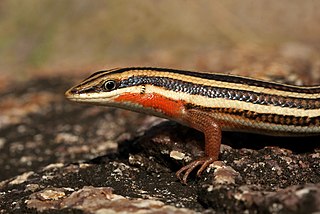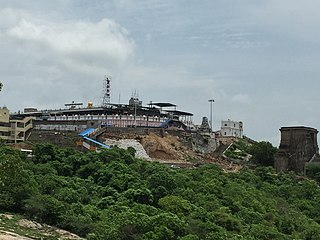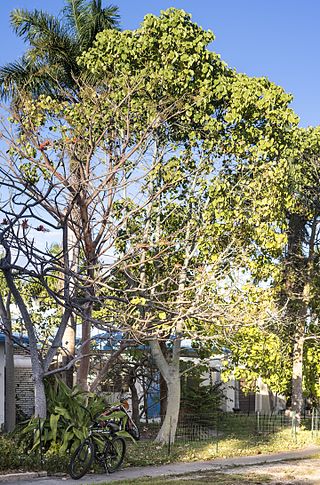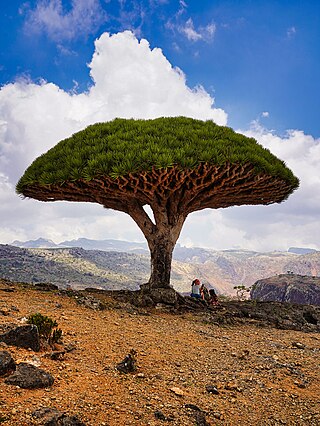
The Eastern Ghats are a discontinuous range of mountains along India's eastern coast. The Eastern Ghats pass through the states of Odisha and Andhra Pradesh to Tamil Nadu by, passing parts of Karnataka and Telangana on the way. They are eroded and cut through by four major rivers of peninsular India, the Mahanadi, Godavari, Krishna and Kaveri. Zindagad Konda is the highest point in both Andhra Pradesh and the Eastern Ghats at 1,690 metres (5,540 ft). The Biligiriranga Hills in Karnataka are the tallest hill range in the Eastern Ghats, with many peaks above 1500 m in height.

South India, also known as Peninsular India, is the southern part of the peninsular Deccan Plateau in India encompassing the states of Andhra Pradesh, Karnataka, Kerala, Tamil Nadu and Telangana as well as the union territories of Lakshadweep and Puducherry, occupying 19.31% of India's area and 20% of India's population. It is bound by the Bay of Bengal in the east, the Arabian Sea in the west and the Indian Ocean in the south. The geography of the region is diverse, with two mountain ranges, the Western and Eastern Ghats, bordering the plateau heartland. The Godavari, Krishna, Kaveri, Tungabhadra and Vaigai rivers are important non-perennial sources of water. Chennai, Bangalore, Hyderabad, Coimbatore and Kochi are the largest urban areas in the region.

The East Deccan dry evergreen forests is an ecoregion of southeastern India. The ecoregion includes the coastal region behind the Coromandel Coast on the Bay of Bengal, between the Eastern Ghats and the sea. It covers eastern Tamil Nadu, part of Puducherry and south eastern Andhra Pradesh.

Palar is a river of southern India. It rises in the Nandi Hills in Chikkaballapura district of Karnataka state, and flows 93 kilometres (58 mi) in Karnataka, 33 kilometres (21 mi) in Andhra Pradesh and 222 kilometres (138 mi) in Tamil Nadu before reaching its confluence into the Bay of Bengal at Vayalur about 75 kilometres (47 mi) south of Chennai. It flows as an underground river for a long distance only to emerge near Bethamangala town, from where, gathering water and speed, it flows eastward down the Deccan Plateau. The Towns of Bethamangala, Santhipuram, Kuppam,Mottur, Ramanaickenpet, Vaniyambadi, Ambur, Melpatti, Gudiyatham, Pallikonda, Anpoondi, Melmonavoor, Vellore, Katpadi, Melvisharam, Arcot, Ranipet, Walajapet, Kanchipuram, Walajabad, Chengalpattu, Kalpakkam, and Lattur are located on the banks of the Palar River. Of the seven tributaries, the chief tributary is the Cheyyar River.

Shorea is a genus of about 196 species of mainly rainforest trees in the family Dipterocarpaceae. The genus is named after Sir John Shore, the governor-general of the British East India Company, 1793–1798. The timber of trees of the genus is sold under the common names lauan, luan, lawaan, meranti, seraya, balau, bangkirai, and Philippine mahogany.

The bare-bellied hedgehog, also known as the Madras hedgehog, is a species of hedgehog that is endemic to dry arid regions and scrubby jungles in southeastern India. As it was believed to be rare, it was formerly listed as Vulnerable by the IUCN. It is now known to be locally common in the Indian states of Andhra Pradesh and Tamil Nadu, resulting in its new listing as a species of Least Concern. Hedgehogs are protected species under schedule IV of Wildlife Protection Act (1972).

Tirupati is a city in the Indian state of Andhra Pradesh. It is the administrative headquarters of the Tirupati district. The city is home to the important Hindu shrine of Tirumala Venkateshwara Temple and other historic temples. It is located at a distance of 150 km from Chennai, 250 km from Bangalore, 406 km from Amaravati. It is one of the eight Svayam vyakta kshetras dedicated to Vishnu. Tirupati is a municipal corporation and the headquarters of Tirupati (urban) mandal, Tirupati (rural) mandal, and the Tirupati revenue division.

Sri Venkateswara National Park is a national park and biosphere reserve in Tirupati in Andhra Pradesh, India. The total area of the park is 353 km2. The park is known for its many waterfalls, including the Talakona, Gundalakona and Gunjana. As the Government of India declared the Seshachalam Hills as one of the biosphere reserves of India in 2010, this national park becomes the part of it.

Platyceps bholanathi, also known as the Nagarjun Sagar racer, Nagarjunasagar racer, Nagarjuna racer, Bhola Nath's racer, or Sharma's racer, is a species of colubrid snake. It is found in peninsular India, in the Eastern Ghats and the Deccan Plateau, in the states of Andhra Pradesh, Karnataka, Tamil Nadu, and Telangana. It is a rather recently described species, that was first discovered in 1976, in the Nagarjuna Sagar Dam by scientists of the Zoological Survey of India.

The yellow-throated bulbul is a species of songbird in the bulbul family of passerine birds. The species is endemic to southern peninsular India. They are found on scrub habitats on steep, rocky hills many of which are threatened by granite quarrying. It is confusable only with the white-browed bulbul with which its range overlaps but is distinctively yellow on the head and throat apart from the yellow vent. The calls of this species are very similar to that of the white-browed bulbul.

Sharma's mabuya is a species of skinks found in India. It was described by Sharma (1969) from hills south of Vijaypuri on the right bank of the river Krishna in Andhra Pradesh.

Tiruttani is a town in the Tiruvallur district, a suburb of Chennai within the Chennai Metropolitan Area, located in the state of Tamil Nadu, India. The town is renowned for the Tiruttani Murugan Temple, which is one of the Arupadaiveedu and is dedicated to Kartikeya (Murugan). Tiruttani was added to the Chennai Metropolitan Area in October 2022.

The Deccan thorn scrub forests are a xeric shrubland ecoregion of south India and northern Sri Lanka. Historically this area was covered by tropical dry deciduous forest, but this only remains in isolated fragments. The vegetation now consists of mainly of southern tropical thorn scrub type forests. These consist of open woodland with thorny trees with short trunks and low, branching crowns; spiny and xerophytic shrubs; and dry grassland. This is the habitat of the great Indian bustard and blackbuck, though these and other animals are declining in numbers; this area was at one time home to large numbers of elephants and tigers. Almost 350 species of bird have been recorded here. The remaining natural habitat is threatened by overgrazing and invasive weeds, but there are a number of small protected areas which provide a haven for the wildlife. Trees in these forests have adapted to not require much water.
Eriolaena lushingtonii is a species of flowering plant in the family Malvaceae. It is found only in Andhra Pradesh and Tamil Nadu in India. It is threatened by habitat loss.

Hildegardia populifolia is a species of flowering plant in the family Malvaceae. It is found only in the Eastern Ghats of Andhra Pradesh and Tamil Nadu in India. It is threatened by habitat loss; just about 20 trees are known to exist on the eastern slopes of the Kalrayan Hills.

The gray slender loris is a species of primate in the family Loridae. It is native to India and Sri Lanka and inhabits subtropical and tropical dry forests and subtropical or tropical moist lowland forests. It is threatened by habitat loss.

Schneider's leaf-nosed bat or Schneider's roundleaf bat is a species of bat in the family Hipposideridae. It is endemic to South Asia. Its natural habitats are subtropical or tropical dry forests, caves, and urban areas.
Shorea obtusa, the Siamese sal, is a species of hardwood tree in the family Dipterocarpaceae, native to Southeast Asia.

Dracaena cinnabari, the Socotra dragon tree or dragon blood tree, is a dragon tree native to the Socotra archipelago, part of Yemen, located in the Arabian Sea. It is named after the blood-like color of the red sap that the trees produce. It is considered the national tree of Yemen.

















